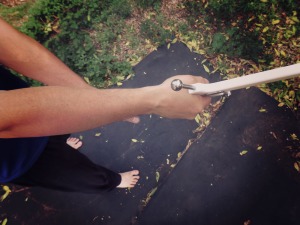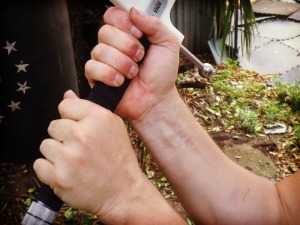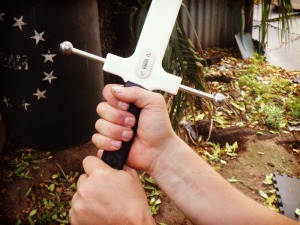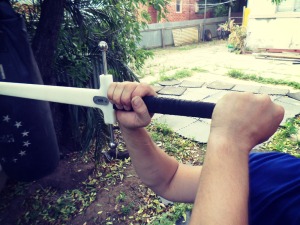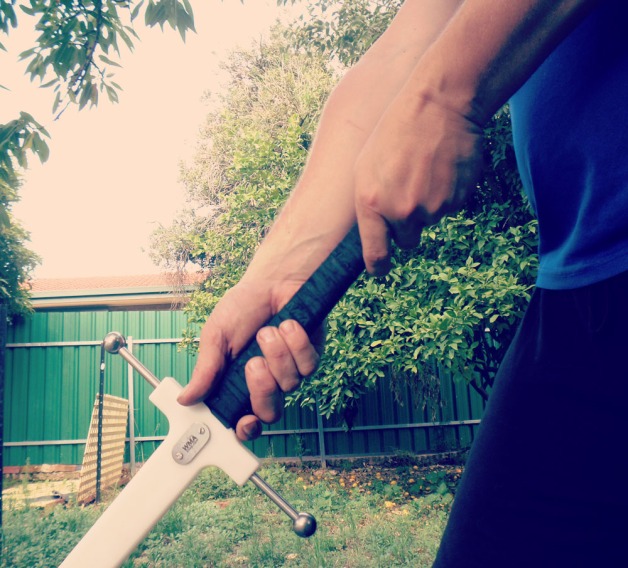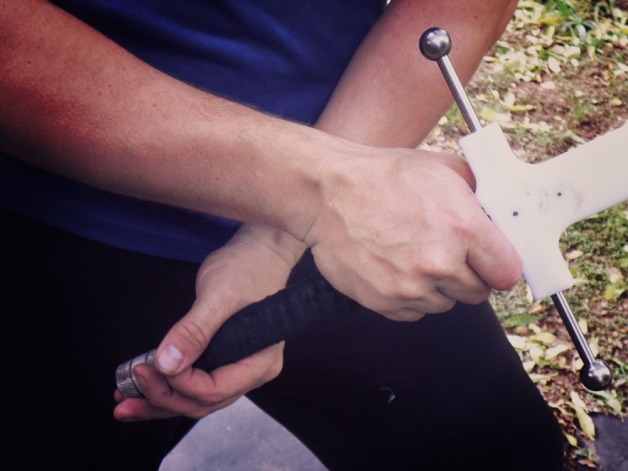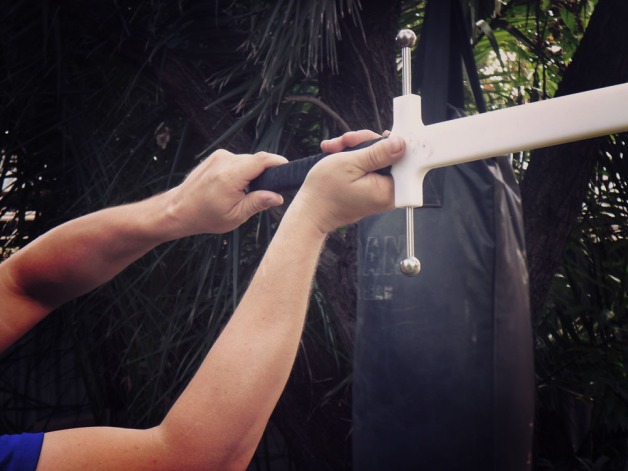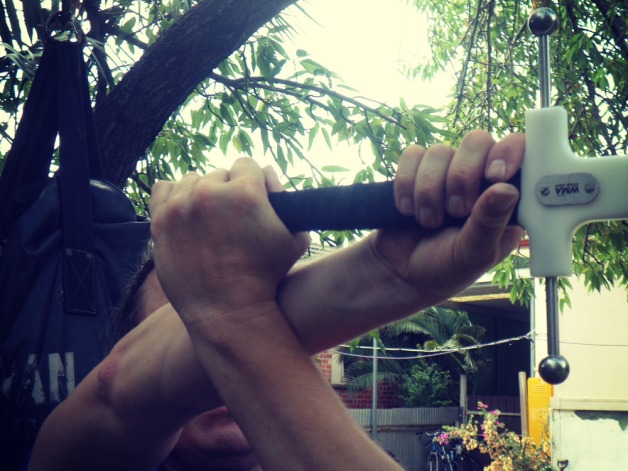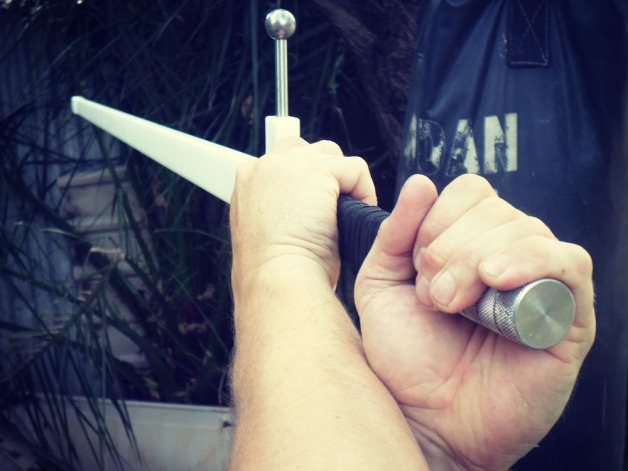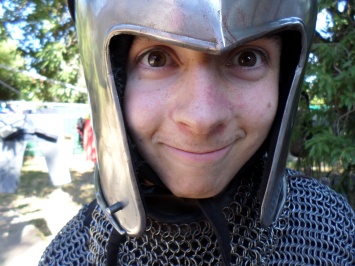Pflug. Plough. This one I can do.
At least that’s what I think when on my second sword fighting lesson Master Raske shows us attacks from Flugh and sends us off to practise in pairs. I grab Eliot, a mask and one of the Hanwei practise swords (which don’t look like Glamdring or Lion claw but are still epic cool) and prepare to be awesome. The sword is light and well balanced in my hands and I think how Eliot will be impressed as I bring the sword into Pflug.
She isn’t.
‘Not like that, Fitz.’ Eliot lifts her own sword and scowls at me down the blade. You’re getting it all wrong.
‘No, I’m not.’
‘Yes, you are.’
‘No, I’m not.’ I look down at my hands holding the sword in the position made famous by Obi wan Kenobi facing Darth Vader (at the beginning of the fight not the end when he’s trying to die so I don’t see what Eliot’s problem is). ‘I know how to do this.’
Eliot rolls her eyes in a gesture that is sufficiently clichéd it doesn’t need a particular movie to be famous. ‘Suit yourself, Fitz. You go first.’
She’s got the sword on her right hip and it’s not even angled across her body so I do an oberhau (overstrike) to her left side and for about half a second I think I’m doing well.
Till she beats my point down and smacks me in the face (with sufficient force that I’m very pleased I’m wearing a mask). ‘Told you it was a stupid guard.’
‘It’s not a stupid guard,’ I insist because surely five Star Wars movies (the last one doesn’t count) can’t be wrong. ‘Let me try again.’
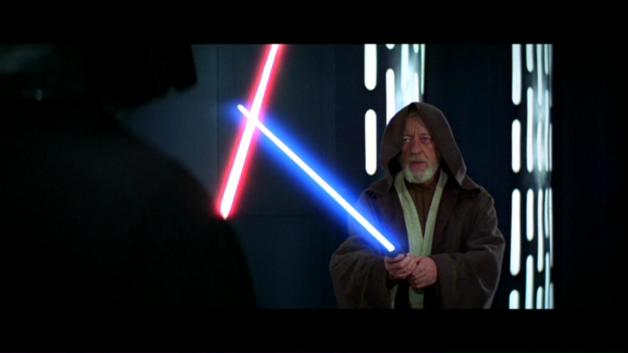
Not ready to cut, not providing a threat, not ready to do anything really, but lightsabers are still cool
She shifts her sword to her left hip. ‘Okay.’
This time I try a stab and when she pushes it down I hold the point on line.
And Eliot grabs the sword.
‘What!’ I say. ‘You can’t do that.’
Eliot keeps hold of my sword and hits me across the mask again. ‘I just did.’
‘But you can’t grab a sword.’
‘Yes I can.’
‘Yes she can,’ Master Raske confirms. ‘As long as she doesn’t mess about. Plenty of sources for sword grabs as well as all the half sword techniques.’ He gives me a look that has a bit too much understanding in it. ‘It’s a sword, Oliver, not a lightsaber.‘
‘That’s what I told him,’ says Eliot but Master Raske silences her with his hand.
‘So are you still interested?’ he says to me. ‘Now you know it’s not quite like the movies.’
And even Eliot’s quiet while she waits for my answer.
But I feel how the sword in my hand moves and I look at Eliot who is four inches shorter than me (and I’m not tall) and who has just kicked my arse and I think about how this art of fencing is real and not just in someone’s imagination and…there’s only one possible answer.
‘Shit, yes,’ I say. ‘So Eliot, how do I hold the sword in Pflug?’
Pflug
Pflug is one of the simplest guards, and yet it’s the most likely to be messed up – as per aforementioned the “hold it like a Jedi knight” pose”. Master Raske says that’s for people who care more about keeping the blade in the picture frame than fencing.

You should hold Plough on one side – the left or the right, by your hip, with the point held at the opponent’s throat. Later masters (like Meyer) will tell you to hang it by your knee, but that requires more flexibility and strength than I have at the moment. The reason we do this is that it only leaves one side open, so that makes defending your opening much easier.
On the left hip, we hold Pflug with a thumb grip. So you don’t get smacked in the fingers when you’re parrying.
Remember, keep the point up, because no one likes a floppy Pflug. (I still don’t know why everyone thinks that’s so funny.)
Attacks
The attacks from Pflug are pretty obvious. You thrust. Even if you cut, thrusting first is a good idea. You can also thrust up into an Ochs-like position, which I think looks pretty epic.
And like I said, it’s important to be able to flow off your thrusts into a cut. This is a nice compound attack because you can use it to fake out your opponent into covering a different opening. Any cuts are good – oberhau, unterhau, or even the master cuts. You should practise all of them.
The last attacking skill we’ll use from Pflug is changing through. This is just a little circle with the point under the blade, to thrust again on the other side. If you can mix up cutting and changing through you’ve got some good potential attack combinations coming along.
Defences
Pflug is a defensive guard. I mean, that it is both strong position to parry from, and a parry at the same time; It’s easy to raise up into Ochs to defend against a high blow, and you can use it to defend against a low blow. Solid.
Master Raske reminds us that Ochs and Pflug go together. What pulls a Plough (Pflug) – an Ox! So we use them together to defend our openings, against both cuts and thrusts.
One of the other defences we can use from Pflug is a Hanging, or Hengen. We learnt this last time with Ochs, and it’s even easier to do from Pflug. Just parry raising your arms and dropping the tip, swinging the sword in a circle to counter-attack. Make sure you step out nicely as you do.
Finally, there’s heaps of cool grappling moves you can pull off from Pflug. Like a hilt hook, a pommel, or using the neck to leverage your opponent down. Check out the video to see how these work.
See you again soon!










